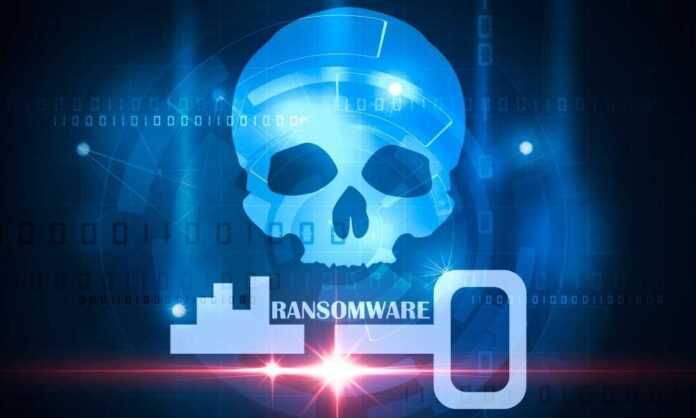Cybersecurity threats are now an integral part of our lives, hackers seeking to disrupt operations or damage information. Malicious actor groups have specialized in infiltrating business networks and selling that access to others. While big corporations are obvious targets for cybercriminals, no one would even think that they bother to exploit the vulnerabilities of small businesses. Ransomware is a very common and evolving cybersecurity threat, with several unpleasant experienced publicized. Everyone from the private sector to the federal government is at risk. Given the constantly evolving threats, a more resilient digital ecosystem and more secure infrastructure should be built.
Is Ransomware a Malware or A Virus?
Viewing ransomware as a virus isn’t correct from a technical standpoint. Ransomware is malware, meaning it’s meant to damage, disrupt, or hack a device. Malware is any type of software that threatens or compromises networks or devices to steal data or make the system inoperable. Ransomware prevents access to data or applications until a ransom fee is paid to the creator. Not only is it difficult but also expensive to remove. Removal varies from simple to impossible. Ransomware is detected only if the attacker announces it via a pop-up on the screen.
There are two main types of ransomware: locker ransomware and crypto-ransomware. The screen locker blocks access to the device by taking over the operating system. On the other hand, an encryptor transforms the data into unreadable nonsense. The user interface is still accessible, yet the files remain inaccessible. New types of ransomware will become notable. Jackware is just one example. It’s extremely dangerous because it targets embedded devices, so computers are not restricted. As bad as the cyber-attacks are now, they could get worse.
Over The Past Few Years, We’ve Seen an Increase in Ransomware Attacks.
Rely on Microsoft to reduce the risk of cyber-attacks and prevent unauthorized exploitation of your systems, networks, or technologies. You’re most likely going to be in the news. As we all know, Microsoft has been recently the victim of a nasty vulnerability. It could have been exploited for ransomware attacks. Microsoft Defender for Business isn’t good enough to rely on. It’s best to let the experts deal with security. New technologies aren’t beneficial if you’re not able to use them. Regardless of size, no company is exempt from falling victim to a data breach.
Getting back on topic, ransomware attacks on Microsoft and other major organizations don’t show any signs of slowing down. This translates into the fact that the threat remains constant. In 2021, malicious actors have leveraged ransomware as their principal attack vector, high-profile organizations being subjected to attacks. Examples include Colonial Pipeline, JBS, and the Washington DC Metropolitan police. The question now is: Why did ransomware hit record highs? Many argue that it’s because companies are paying the ransom. Maybe so, but the COVID-19 pandemic is to blame for the frequency of cybersecurity threats. The fear and uncertainty among individuals have made it easier for hackers to exploit IT systems and networks vulnerabilities.
Isn’t the Only Thing to Watch Out For
Cybercriminals can target individuals, businesses, and organizations. They don’t discriminate when it comes to selecting their victims. It would be a mistake to assume that ransomware is the only threat. There’s been a rise in hacking methods. Malicious actors resort to various techniques to achieve their wicked objectives. When hackers set out to attack individuals or organizations, they use a wide array of techniques, tools and technical expertise. Examples include but aren’t limited to phishing, DDoS attacks, and password spraying. Hacking techniques are ever-evolving, which is why it’s important to keep up with the trends.
Even if security experts are co-opted, malicious actors manage to stay one step ahead. The health crisis has created the perfect environment for digital threats such as malvertising. As the name suggests, it’s a combination of malware and advertising. Hidden malware is distributed through legitimate ad networks and websites. Malvertising installs a small piece of code, which sends the device to a criminal command and control server. The server then determines what malware is most suitable to send. Hackers attempt to escalate privileges, evade defences, and exfiltrate compromised data. Or they do it because they can. At times, malicious actors want to test their skills.
The constantly changing threats and vulnerabilities in the cyber area leave many unprepared. There’s a mass movement of inertia, a sign of dangerous weakness and further tragedies. As far as the United States is concerned, nation-state hackers are the most dangerous ones, as they target critical infrastructure and industries known to withhold sensitive data. The likelihood of cyber attacks increases in frequency and, most importantly, severity. It would be best if companies, industry organizations, and law enforcement joined their forces together and lessened the threat of malicious acts. Cyber resilience can minimize exposure time and the impact of serious threats.
The Ransomware Problem Is Pretty Bad, and It’s Not Going Away Anytime Soon
The issue with ransomware is that cybercriminals are continually using it. An organization hit by this digital threat suffers on many levels. Examples are loss of important data, financial repercussions, not to mention an overall sense of embarrassment. Unfortunately, it impacts regular people as well. These cyber-attacks result in transportation problems, lost school days, and delayed ambulances, to name a few. Let’s direct attention away from executive suites, cybersecurity companies, or government agencies. Even countries with the most advanced security technologies and higher awareness of digital threats are at risk.
Given that ransomware attacks work, they won’t go away anytime soon. They’re here to stay. As soon as we understand the methods used by hackers, we can appreciate what solutions will work. Malicious actor groups waste no time when it comes to exploiting the current situation for their malware objectives. It shouldn’t come as a surprise if the number of cyber-attacks doubles in the future.

